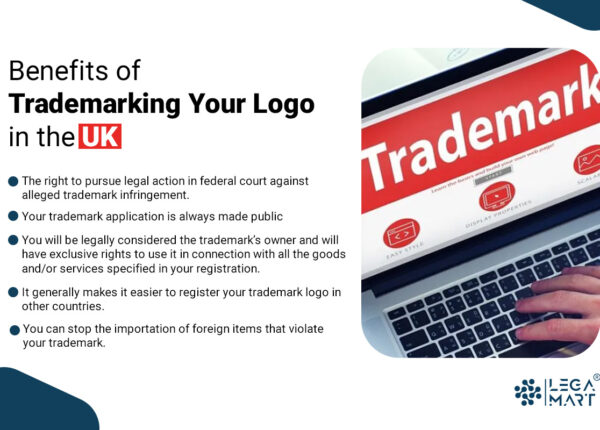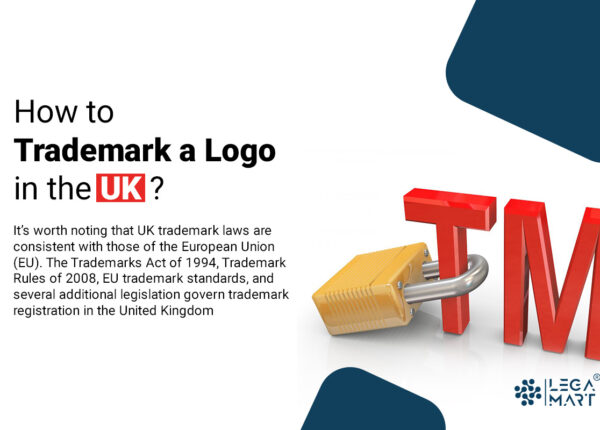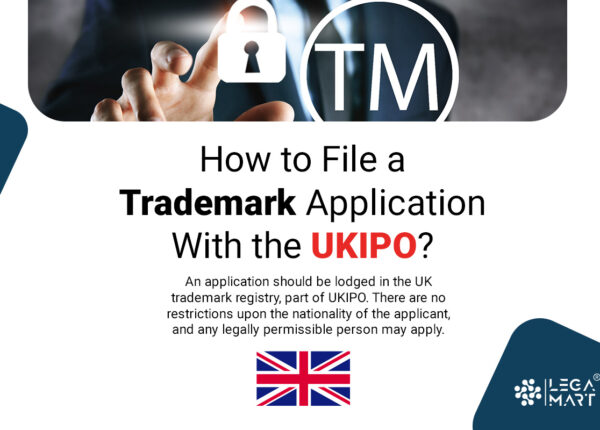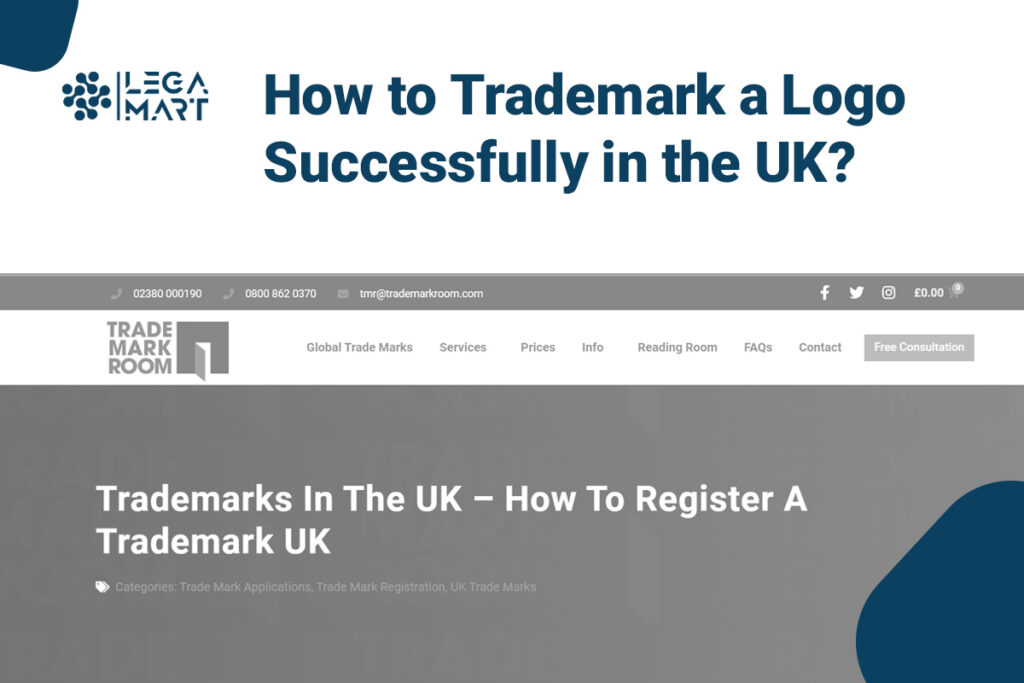Trademark a Logo
Coming up with a unique business name can sometimes be one of the most thrilling experiences of launching a brand-new company. Since this name is an essential component of your brand, you should establish ownership and secure it with a registered trademark. Because registering a trademark logo guarantees that your brand name remains distinct and separate, it protects against misappropriation or theft. This article is a perfect read for someone who wants to learn more about what a trademark is, why you should trademark a logo and your unique business name etc., and how to get it registered and trademark a business name in the UK. You should trademark a logo as soon as possible in order to restrict some similar business getting it done before you for their advantage.
Introduction
Basically when you trademark a logo then it serves as an identifier that usually takes many forms, including phrases, slogans, logos, shapes, colours, and sounds. They are often used to differentiate one of the vendor’s goods or services from those of another. It even protects you legally against anyone who is misrepresenting your brand or using it without your prior permission, as well as from competitors using a name that is almost the same or similar to yours.
When you trademark a logo you can easily obtain some legal protection by incorporating a logo and slogan in your business name, but when you trademark a logo with the UK Intellectual Property Office (IPO) then it provides the best protection.
This article will clear all your doubts related to the trademark of your logo in the UK as it has answered some of the most crucial questions such as:
- What benefits will you get after your logo is successfully granted a trademark;
- How to trademark a logo in the UK?
- How to know if your logo is strong enough to get accepted for trademark registration.
Benefits of Trademarking Your Logo in the UK

Under the Trademarks Act, 1994, Section 1 defines that a trademark logo is any sign which is capable of being graphically represented in such a manner that the registrar, competent authorities, and the public can have a clear picture of the subject upon which protection will be provided to the owner. Along with that, when you trademark a logo it can be any sign which is capable of distinguishing the goods or services of one entity from another.
A trademark generally includes logos, words, letters, sounds, colors, and shapes of goods or packaging. As we can see, a trademark can protect logos.
Now, moving to the benefits that you can get if you trademark your logo. The benefits are mentioned below:
- The right to pursue legal action in federal court against alleged trademark infringement.
- Your trademark application is always made public.
- You will be legally considered the trademark’s owner and will have exclusive rights to use it in connection with all the goods and/or services specified in your registration.
- It generally makes it easier to register your trademark logo in other countries.
- You can stop the importation of foreign items that violate your trademark.
How to Trademark a Logo in the UK?

Basis of Trademark Registration in the UK
It’s worth noting that UK trademark laws are consistent with those of the European Union (EU). The Trademarks Act of 1994, Trademark Rules of 2008, EU trademark standards, and several additional legislation govern trademark registration in the United Kingdom.
In order to trademark a logo in the United Kingdom, you have to utilize one of the three methods listed as follows:
- File a trademark application at the UKIPO (UK Intellectual Property Office) for registering the UK trademark.
- File an application at EUIPO for obtaining an EU trademark registration, or
- File a trademark application at WIPO for obtaining an international registration for either an EU or UK trademark.
The registration for UK trademarks is governed under the UKIPO. However, if it is a US trademark, then you may have to file a trademark application at USPTO (The United States Patent and Trademark Office).
Once a trademark application is filed at UKIPO, the proprietor generally receives a filling receipt and the process of examination, which will take place between three and six weeks. If the examiner raises no objections, then the application will get published in a trademark journal for around two months. This would help the third parties to oppose this registration. If no objections are raised, the application will proceed with the registration within five months.
Reasons for Rejection
The officers of the registry extensively examine an application for trademark of a logo; if they discover any violations of the law or existing registered marks, they may reject the mark’s registration application. Currently, the application’s status will be “Marker for Exam.” The following are the reasons for the trademark registration application being rejected.
The application procedure
The first thing that the examiner will look for is whether the application was filed per the procedure stated in law and whether all of the required information was served correctly. If the examiner discovers anything is wrong with the process or the application materials, he has the authority to reject the application.
Same as a registered trademark
While applying for a trademark of a logo, you should always check to see that your mark is not the same or similar to an already existing trademark. You can easily accomplish this by conducting a simple and easy public search on the controller general’s website for patents, designs, and trademarks or by hiring a lawyer who is a specialist in trademarking a logo application. If the examiner discovers that the mark being filed for is identical to an already registered trademark or a trademark that is presently registered, he may reject the application.
Design or descriptive terms
If there are any descriptive phrases or terms in the mark that are regularly used to identify a product. For example, attempting to trademark the word SWEET for marketing products such as chocolate or candy will be rejected because it would be unfair to others.
General phrases or designs
General words such as PENS or PENCILS cannot be trademarked to sell pens or pencils since only one company can be allowed the phrase to use exclusively. As a result, the examiner may refuse to register such a mark.
Offensive language or design
When you trademark a logo it cannot include an insulting term or design, which would be against public decency and order. As a result, objectionable design phrases are frequently rejected by the examiner.
Confusing terminology or design
A misleading or deceptive mark is any mark that can mislead the consumer about the product’s origin, producer, quality, substance, and so on. For example, if a mark depicts a FISH, but the product is solely red meat, the ark may be rejected as deceptive.
Words or official designs
If the mark incorporates official phrases, terms, designs, or pictures, the examiner will reject it for registration because it is detrimental to public welfare. It may mislead the buyer into believing that it is sanctioned by an official entity. For example, if the trademark logo represents a national flag, it will be refused on this basis.
Conditions and limitations
If the examiner believes the ark is legal but requires specific limitations or adjustments to its use of appearance, he may refuse to register the mark as is.
Objection
After seeing the markup for registration, the examiner may object to its registration. The status of the application will be “Objected” in this situation. At this phase, usually, the applicant gets an opportunity to present his case to the examiner.
If the mark matches with the first two conditions, then the applicant will be invited to reply within two months with proof or submissions. If the mark is widely recognised or has been in use in the UK for not less than 5 years and records are provided, then you can easily prove the mark’s uniqueness.
How to File a Trademark Application With the UKIPO?

An application should be lodged in the UK trademark registry, part of UKIPO. There are no restrictions upon the nationality of the applicant, and any legally permissible person may apply.
Step 1: Search
Before you trademark a logo a trademark search should be conducted before filing the application. Through our website you can access experienced trademark lawyers who are willing to help you. Trademark search generally provides information on whether your brand name, logo, etc., can be registered.
Step 2: Filing your application
To file a trademark application in the UK, you will need:
- Trademark name;
- A picture of your trademark logo (.jpg image preferred);
- Applicant’s name and address (this may be an individual, two individuals, or a legal body, such as a Limited Liability Partnership (LLP) or a firm);
- A list of the goods and/or services for which your trademark logo mark is currently or will be utilized. Don’t be concerned about sending an accurate list. A description in your own words is sufficient.
Please give the filing date, application number, and country of first filing if your application claims priority from a matching foreign trademark application. After you approve it, your trademark will be submitted online.
The UK IPO (UK Intellectual Property Office) issues an official filing receipt 2-4 days after filing. The filing receipt validates the filing date and assigns a number to the application.
Step 3: Examination
Within 5-15 days, your UK trademark application will be assessed. Your application is being reviewed based on the following criteria:
- Relative grounds – the examiner searches prior trademarks affecting the UK and notifies UK applicants if your trademark logo is similar to a previously filed or registered trademark. It is important to note that the Trademark Office will not decline your trademark if there is a similar mark; and
- Absolute grounds – the examiner assesses whether the trademark of a logo is descriptive or non-distinctive. The examiner will review your mark to ensure it is neither offensive nor immoral.
The examiner may also ask additional questions, such as requesting that the goods/services be re-specified if unclear. If an examination objection is lodged, the examiner will give the applicant time to respond.
Step 4: Publication
The application will be published in the online Trade Mark Journal once the examination step is finished. Third parties have two months to file an opposition based on prior registered or unregistered rights. Confusion about a previously filed or registered trademark is the most prevalent basis for opposition. Other factors include descriptiveness and poor faith. Only about 5% of total applications are generally contested, so you should not be too concerned about it.
To reach a compatible agreement, a third party is most likely to request that the opposition phase be prolonged at least by one month. Oppositions tend to be overcome by simply modifying the goods/services (for instance, limiting them). Many lawsuits are settled without the need for lawyers.
Step 5: Registration
The UK IPO will provide an electronic registration certificate two weeks following publication. Paper certificates are no longer made available. We will email you the electronic copy. The registration certificate certifies the registration information and dates.
Once your UK trademark logo application is approved then, you can use the ® sign to indicate that your trademark has been legally registered. Please do not use the ® sign until you have registered. You might also say, “[YOUR TRADE MARK] is a Registered UK Trade Mark of [PROPRIETOR].” This informs people about your rights and can even serve as a deterrent.
It will be worth mentioning that generally, in the United Kingdom, a “trademark” (two words) is used for many reasons. On the other hand, in the United States and Canada, a “trademark” (one word) is commonly used for clarity and consistency. We also prefer using “trademark” rather than “trade mark.”
Next step: Renewal
A UK trademark logo registration is valid indefinitely, although it must be renewed every ten years. Five years after registration, a UK trademark registration can be revoked due to non-use.
How to Respond if Your Trademark is Denied?
If your trademark of a logo is denied, and you feel the rejection is unfair, or you disagree with the decision, then you can follow the below steps:
You can request a hearing if your trademark application is denied.
- You need to submit evidence for the objection raised under Section 3(1) of the Trade Marks Act, 1994 which states the distinctiveness of the mark. Likewise, you may send the evidence as samples of packaging of goods, any copies of advertisements of your goods or services, or copies of your sale brochures. Please note that all the information you provide must be related to the use of the mark in the UK and before the date of trademark application.
- Divide your application into two forms by using form TM12
- If it was found that your application is similar to the earlier trademark of a logo in the way it looks or sounds or if it is of similar goods or services, then you may bring a letter of consent from the earlier trademark rights holder, which must state that the owner is allowing the application to be registered.
- If in case you have missed responding within the stipulated time, then your application may get rejected. An applicant may apply for an extension if you want more time to reply.
If someone else files for the same trademark, then you can oppose the trademark within a period of two months when the trademark application gets published in the trademark journal. If you find that the application is accepted by mistake, then you can provide any relevant facts that the trademark registry may have missed during the examination process.
Conclusion
To summarise, to successfully trademark a logo in the United Kingdom it requires a strategic and precise approach. A thorough trademark search is necessary to guarantee that the proposed logo does not infringe on any existing trademarks. This will lower the risk of potential conflicts and undoubtedly increase the likelihood of a successful trademark application.
Trademark a logo and once it is registered it will basically give you legal protection. It will help you develop a successful and strong brand identity and reputation in the marketplace, which is necessary for business in the era of cut-throat competition. Individuals and even organizations can easily manage the process of trademarking a logo in the UK; they are just required to follow the steps mentioned above and by seeking some professional guidance. This will eventually protect your intellectual property and lay the groundwork for long-term brand recognition and growth.
A Guide to the Successful International Registration of Trademarks in the US




